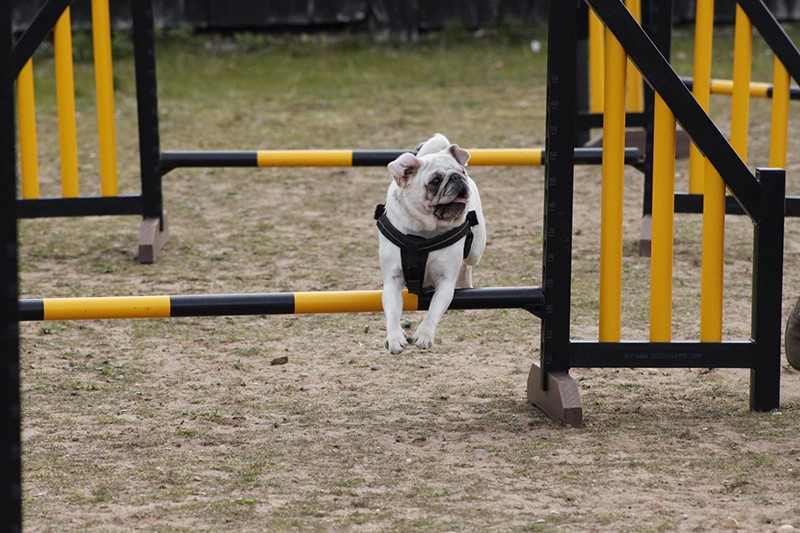Pug Breed Profile
Pug Breed Profile
History of the Pug
Originating from China, the Pug was very popular with royalty and aristocracy. Nowadays they are popular pets as they are non aggressive and get on well with children. Celebrities love them too! In fact for the first time last year the Pug entered the Kennel Club's official Top 20 most popular breeds in the UK!
Even compared to other fashionable breeds, the rise of the Pug has been remarkable. Over the past 10 years, Kennel Club (KC) registrations of the Pug have increased by over 450 per cent, from 1,675 in 2004 to 8,071 in 2013. This rise saw the breed gatecrash the top 20 most popular breeds in 2006 and continue rising to fourth position last year. Registrations have increased every year since 2004 and the surge shows no sign of slowing down.
Pug character
Pugs are very friendly and amusing - they have human characteristics. They are very adaptable to many different lifestyles. As long as they have company they are happy. There have also been a lot of high-profile people who have Pugs which has made them more fashionable.
Pugs are independent and resolute and know what they want! They are stubborn but rarely aggressive and get on with people and other animals. They are loyal, playful, eager to please, enjoy company, and are extremely intelligent. If you thought that Pugs were just coach potatoes, think again. They are energetic and can enjoy dog activities.
Associated health concerns with the Pug
The Pug has a reputation for suffering from poor health. However, while they're prone to some health conditions,many enjoy long lives. Vet Vicky Payne observed: "Our practice has a number of Pug patients and most are in good overall health. The majority only visit us for routine health care and it isn't unusual for us to see Pugs over 12 years old."That said, there are some conditions owners need to be aware of:
Brachycephalic airway disease
This is a partial blockage of the airflow from the nostrils to the throat, and is common in breeds with flat faces. Surgery can be performed to help the flow of air.
Eye problems
The Pug's prominent eyes are more prone to injury. Corneal ulcers - a wound on the eye's surface - can occur as a result of injury, infection, or lack of tear production. Pugs can also suffer from cataracts - an opacity within the lens of the eye that can cause blindness.
Hemivertebrae
This is the degeneration of the spine. The condition is almost untreatable and the outlook is bleak. The Kennel Club recommends all breeders use the breed council health tests for hemivertebrae checking.
Patella luxation
Common in small breeds, patella luxation occurs when the dog's kneecap slides out of place. It can be congenital or caused by trauma."Almost all the Pugs we see have some degree of breathing problems due to their facial conformation but most are able to enjoy two walks a day and play,"said Vicky. "A couple of our young Pugs will probably need surgery to open their stenotic nostrils, which is a worrying trend."The most common Pug problems we see are eye ulcers, which can be more difficult to treat in Pugs than other breeds. Ulcers can heal but there is a risk of the eye rupturing and we do have a couple of one-eyed Pugs."Luckily we haven't had any patients affected by spinal problems but we do see Pugs with luxating patellas, some of which require surgery."
Pug activity levels
Pugs like their food and if they are overfed and do not get enough exercise they can easily become overweight. "Obesity is always something we watch out for as Pugs can be lazy and prone to weight gain, especially if their owners can't resist giving them treats," said vet and Your Dog contributor Vicky Payne. They have a naturally cobby appearance but it is important to keep your Pug at a healthy weight or this can intensify any health issues and cause breathing difficulties. Although they don't need huge amounts of exercise, Pugs are energetic and will happily go for a good walk and enjoy games and activities.

Pug Special Care
Pugs cannot tolerate high heat and humidity. Because of their short snouts they do not have the ability to cool themselves like other breeds through panting. Overheating can be fatal.
Facts about the Pug
- A group of Pugs are often referred to as a 'grumble'.
- Many Pugs will make a grunting noise - this is more obvious when they're excited.
- The breed standard includes the Latin phrase 'multum in parvo' meaning 'much in little' - a great way to sum up the Pug's character and appearance.
- The Pug has been a favourite of royalty, arriving in England when William III came to the throne. Queen Victoria also loved the breed and owned lots of Pugs.
- The Pug is thought to have originated in China and is considered to be one of the oldest dog breeds in the world.
- A Pug's facial wrinkles need regular care to keep them clean and free from inflammation.

